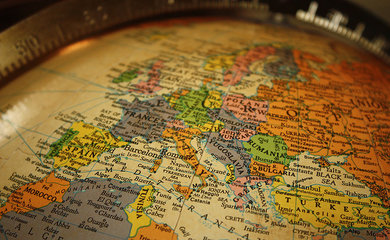“Human beings the world over exhibit morbid fascination with violence, with cruelty. Could this kind of voyeurism be necessary for remembrance? People seem to want to know that it actually happened just like that. Each generation has to re-learn the pain.”
Those were the words of Iraqi writer Kanan Makiya in the early 1990’s. During that time he visited Iraq’s Kurdish region which had undertaken a failed uprising against Saddam Hussein in March 1991 just after the end of the Persian Gulf War. That failed uprising had seen many Baathist offices looted along with the homes of high officials. Video tapes looted from these offices Kurds could see the true abuses of that regime. Documented for all to see for themselves. The videos depicted Baathist enforcers beating and shooting tied-up partisans in the head with their handguns in footage which eerily foreshadows the depraved videos the Islamic State (ISIS) terror gang have been putting up on the internet.
Makiya’s visit to Kurdistan revealed that people gathered to see the footage for themselves. Hard and angering as it was to watch the availability of the footage made it hard for people not to bear witness. To see for themselves the true brutality of the regime which had long subjugated and brutalized them and what had happened those who had long ago been taken away by the Baathist terror state. Or the “republic of fear” as Makiya aptly termed it.
Today we have seen the emergence of the so-called Islamic State, like its Baathist predecessor it too is built on cruelty, fear and terror. Their utilization of social media and their apparent pride in documenting their increasingly elaborate methods of torturing and slaying their many victims is disturbing. That they are sadists is beyond doubt, but do we as citizens really have to bear witness to this material? Do we have to see for ourselves?
Since ISIS began beheading American journalists in Syria in the summer of 2014 after its devastating blitz across Northern Iraq the world could see, in the production values that rivaled that of a well-made film, an actual beheading of a human being. True unadulterated medieval barbarity for all to see.
I have argued before that our aversion to these beheadings are a clear sign of our civility and of our humanity. But at the same time do these celebrations of the most grotesque of sadism that ISIS routinely exhibit really have to be seen to be believed? Can we not just take it at face value when we read the news that a beheading is a beheading, the burning alive of a prisoner-of-war in a cage of all things is, well, the burning alive of a prisoner-of-war in a cage? Do we have to confirm that these acts are taking place and that they are just as unbelievably as they sound? Do they have to be seen to be believed in other words?
In a sense yes. As someone who has watched many of these documented murders and tortures it appears plain to me that their barbarity simply cannot be conveyed through mere words. Or maybe it can but it is certainly beyond my ability. Even second-hand reports which tell you about these crimes don’t always convey their severity or the sadism and savagery of those who commit them. They are not merely executing their enemies but butchering them in the most elaborately cruel ways they can think of.
We’ve seen some ISIS members have beheaded as many as seventy people they managed to capture. One member of ISIS who became a prisoner-of-war interviewed by an Israeli journalist (Itai Anghel) last year described how he intentionally used “a blunt knife so he’d [his victim] suffer more.”
Since then you can see they have always tried to diversify the ways they butcher their victims. Be it the drowning of men locked in a cage submerged into a swimming pool. The placing of captives into a parked car at gunpoint only – to blow them up with a rocket-propelled grenade at point blank range to the tying together of seven men by the neck with thick rope to blow-off their heads, using small explosive charges, their videos invariably reveal that they revel in the gore which results from their butchers. In most cases in their videos after the murder is shown the horribly deformed remains of their victims are the focus of the camera.
Just like those Kurds gathered around publicly televised playbacks of the regimes crimes 25-years-ago to see for themselves how bad it really was, our somewhat “morbid fascination” coupled with our curiosity impels us to view this sordid material for ourselves. You really have to to truly begin to comprehend the characteristically cruel nature of this group.
This is fascism, have no doubt about it. And to garner some, albeit mild, understanding of it one has to see its hideously ugly face.

